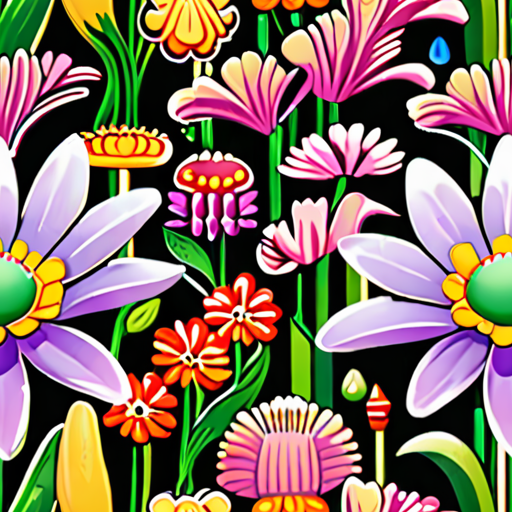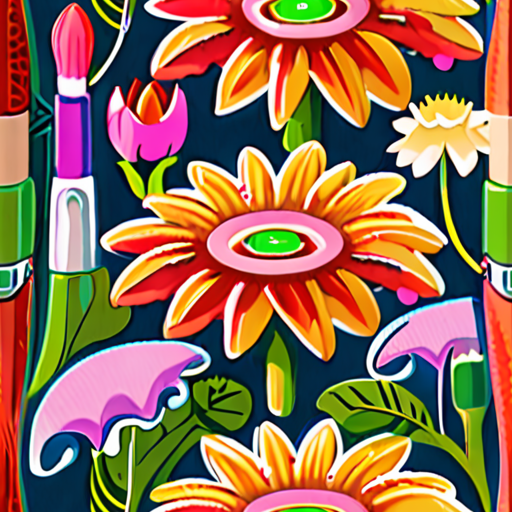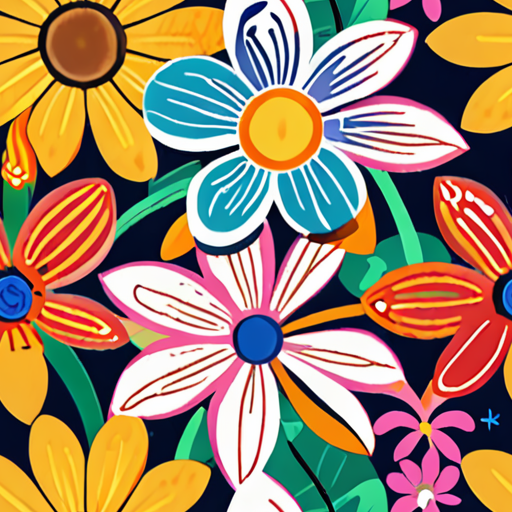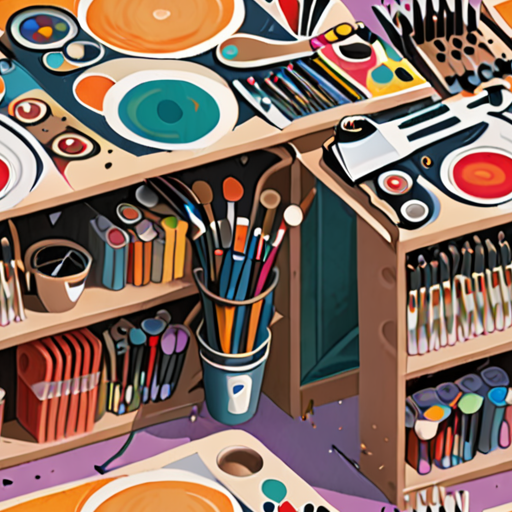“`html
Exploring the profound journey of creative growth in art reveals a world where innovation and inclusion intersect, shaping both individual expression and broader cultural narratives. At the heart of this exploration is Creative Growth Art Center Oakland, a beacon of empowerment for artists with developmental disabilities. Here, creative arts development is not just an endeavor but a transformative process. This narrative delves into the origins of Creative Growth, founded by a visionary who believed in the boundless potential of every artist. It examines how the center defines and nurtures creativity, contributing significantly to the local art scene. By showcasing artists with developmental disabilities, Creative Growth Art Center challenges traditional perceptions and celebrates diverse artistic expressions. This article will guide you through the center’s rich history, its evolution over time, and the impactful museum showcasing these unique works, ultimately highlighting its profound influence on the art world and the ways we can support its mission moving forward.
“`
What is Creative Arts Development?
Creative arts development refers to the process of nurturing and cultivating artistic skills and talents in individuals, particularly children and young adults.
- This can involve teaching various art forms, such as music, dance, theater, visual arts, and creative writing, to help learners develop their imagination, creativity, and self-expression.
- Creative arts development programs often aim to foster critical thinking, problem-solving, and collaboration skills, while promoting emotional intelligence and social awareness.
The Importance of Creative Arts Development
Creative arts development plays a vital role in shaping the cognitive, emotional, and social abilities of individuals, particularly during their formative years.
- Research has shown that engagement in creative activities can enhance cognitive function, boost memory, and improve concentration.
- Creative arts development can also promote emotional intelligence, empathy, and self-awareness, leading to better relationships and social interactions.
- Furthermore, creative arts development can foster innovation, entrepreneurship, and creativity, essential skills for success in today’s fast-paced and rapidly changing world.
Benefits of Creative Arts Development
The benefits of creative arts development extend beyond personal growth and development, impacting society as a whole.
- Creative arts development can contribute to community building, social cohesion, and cultural enrichment, fostering a sense of belonging and identity.
- Additionally, creative arts development can support economic growth, job creation, and tourism, making it a valuable investment for communities and governments alike.
Getting Involved in Creative Arts Development
If you’re interested in getting involved in creative arts development, there are numerous ways to do so:
- You can volunteer at local arts organizations, schools, or community centers, sharing your skills and expertise with others.
- You can participate in online courses, workshops, or webinars, expanding your knowledge and skills in various art forms.
- You can also start your own creative project, whether it’s a blog, YouTube channel, or social media group, sharing your passion and creativity with others.
About the Founder of Creative Growth
The Creative Growth Art Center has its roots in the East Bay home of Elias Katz and Florence LudinsKatz, who envisioned a space where artists could grow and thrive.
- We’re proud to say that our community shares similarities with Artfull Journey, which offers a creative platform featuring articles, resources, and insights for artists and art enthusiasts.
- Creative Growth’s mission aligns with Artfull Journey’s goal of inspiring artistic growth through tutorials, visual storytelling, and exploration of art culture.
Meet the Founders
Elias Katz and Florence LudinsKatz founded Creative Growth in the early days, setting the stage for a legacy of artistic innovation and expression.
- Elias Katz brought his passion for art and education to the table, shaping the center’s early years and laying the groundwork for future success.
- Florence LudinsKatz contributed her expertise in art therapy and education, helping to establish Creative Growth as a hub for artistic growth and development.
A Legacy of Creativity
Under the leadership of Elias and Florence, Creative Growth flourished, becoming a beloved institution in the art world.
Today, we continue to draw inspiration from their vision and dedication to artistic growth, striving to create a community that empowers artists to reach their full potential.
As we look to the future, we remain committed to the values that Elias and Florence instilled in us – creativity, innovation, and a passion for artistic expression.

What Does it Mean to be Creative in Art?
As an artist, I believe that creativity is the foundation of producing innovative and meaningful artwork.
- Aesthetics plays a crucial role in determining whether a piece of art is considered creative or not.
- Artistic expression often involves taking risks and experimenting with new techniques and mediums.
- Creativity can be seen in various forms of art, including painting, sculpture, photography, and more.
The Importance of Originality in Art
Originality is essential in art because it allows artists to express themselves uniquely and authentically.
- When artists push boundaries and challenge conventional norms, they open doors to new possibilities and perspectives.
- Originality fosters innovation and encourages others to think outside the box.
- By embracing originality, artists can create works that resonate deeply with audiences and leave a lasting impact.
How to Cultivate Creativity in Art
Cultivating creativity requires dedication, patience, and a willingness to take risks.
- Experimenting with different mediums and techniques can help artists discover new ways of expressing themselves.
- Studying the work of other artists and learning from their experiences can provide valuable insights and inspiration.
- Setting aside dedicated time for creative pursuits can help artists stay focused and motivated.
Embracing the Process of Creation
The process of creation is just as important as the final product itself.
- Allowing oneself to fully immerse in the creative process can lead to unexpected breakthroughs and discoveries.
- Focusing on the journey rather than the destination can help artists stay present and engaged.
- Embracing imperfections and mistakes can lead to unique and interesting outcomes.
Conclusion
Being creative in art means embracing originality, experimentation, and risk-taking.
By cultivating these qualities, artists can produce innovative and meaningful work that resonates with audiences.

The House That Art Built
Creative Growth is a pioneering organization that has been instrumental in supporting artists with developmental disabilities since its inception.
- Founded in the early 1970s, Creative Growth was the first organization in the United States dedicated to empowering artists with developmental disabilities to express themselves creatively.
- This groundbreaking initiative has enabled countless individuals to tap into their artistic potential, fostering a sense of community and inclusivity within the art world.
- Creative Growth’s mission is centered around providing a supportive environment that encourages experimentation, creativity, and self-expression among its members.
- The organization’s commitment to accessibility and inclusivity has paved the way for a diverse range of artists to contribute to the vibrant tapestry of contemporary art.
As an artist myself, I am deeply inspired by Creative Growth’s tireless efforts to promote artistic expression and empower marginalized voices.
By embracing diversity and promoting inclusivity, Creative Growth has become a beacon of hope for artists who may have otherwise been overlooked or undervalued.
I firmly believe that every individual deserves the opportunity to express themselves creatively, regardless of their abilities or background.
Creative Growth’s legacy serves as a powerful reminder of the transformative impact that art can have on our lives and communities.
As we continue to navigate the complexities of our rapidly changing world, I am reminded of the importance of organizations like Creative Growth that champion artistic expression and inclusivity.
Through their unwavering dedication to empowering artists with developmental disabilities, Creative Growth has left an indelible mark on the art world and beyond.
As an artist and advocate for inclusivity, I am honored to acknowledge the profound influence that Creative Growth has had on my own artistic journey and the countless others who have benefited from their tireless efforts.
Creative Growth’s enduring legacy is a testament to the power of art to transcend boundaries and bring people together in ways that nothing else can.
As we look to the future, I am heartened by the knowledge that Creative Growth will continue to inspire and empower generations of artists to come.
For those interested in learning more about Creative Growth and their remarkable work, I encourage you to explore their website and discover the incredible stories of artistic triumph and resilience that await you there.
Together, let us celebrate the boundless creativity and potential that lies within every individual, and honor the tireless efforts of organizations like Creative Growth that make it possible.
https://www.creativegrowth.org/
The History of Creative Growth Art Center
In 1974, my husband and I, Florence Ludins-Katz and Elias Katz, founded Creative Growth in our garage in Berkeley.
- I was an artist, and Elias was a psychologist who shared my passion for supporting individuals with disabilities.
- We recognized the need for a space where people with developmental and physical disabilities could express themselves creatively and develop their artistic skills.
- Creative Growth quickly outgrew its humble beginnings and relocated to a former auto-repair shop in downtown Oakland in 1978.
- This larger space allowed us to expand our programs and services, offering a wider range of artistic opportunities for our members.
- Today, Creative Growth continues to thrive, providing a supportive environment for individuals with disabilities to explore their creativity and showcase their talents.
Our mission has always been to empower individuals with disabilities to express themselves through art, promoting self-confidence, independence, and personal growth.
Over the years, we have worked tirelessly to establish partnerships with local organizations, schools, and businesses to provide access to art supplies, training, and exhibition opportunities for our members.
As a result, Creative Growth has become a leading arts organization in the Bay Area, renowned for its innovative approach to inclusive arts programming.
We take pride in our commitment to accessibility, inclusivity, and social responsibility, striving to make a positive impact on the lives of our members and the broader community.
By fostering a culture of creativity, empathy, and understanding, we aim to inspire a more compassionate and accepting society, where everyone has the opportunity to thrive and express themselves freely.

Artists with Developmental Disabilities: A Showcase of Talent
The Creative Growth Art Center in Oakland, California, is a renowned institution that provides a platform for artists with developmental disabilities to showcase their work.
- The center’s mission is to empower these talented individuals through art education and exhibition opportunities.
- One notable example is the San Francisco Museum of Modern Art’s exhibit “Creative Growth: The House That Art Built,” which features the works of artists from the Creative Growth Art Center.
- This exhibit highlights the incredible talent and creativity of artists with developmental disabilities, challenging societal perceptions and promoting inclusivity in the art world.
Other Institutions Supporting Artists with Developmental Disabilities
In addition to the Creative Growth Art Center, there are several other institutions and organizations dedicated to supporting artists with developmental disabilities:
- The Arc of the United States, a national organization advocating for people with intellectual and developmental disabilities, has a strong focus on arts programming and accessibility.
- The Disability Visibility Project, a online community and resource hub, features stories and artwork created by disabled artists, highlighting their experiences and perspectives.
- The National Endowment for the Arts (NEA) has implemented initiatives to increase accessibility and inclusion in the arts, including grants and programs specifically targeting artists with disabilities.
Conclusion
The Creative Growth Art Center and other institutions are leading the way in showcasing the talents of artists with developmental disabilities, breaking down barriers and promoting inclusivity in the art world.
By supporting and celebrating these artists, we can foster greater understanding, empathy, and appreciation for the unique contributions they bring to the world of art.

0 Comments